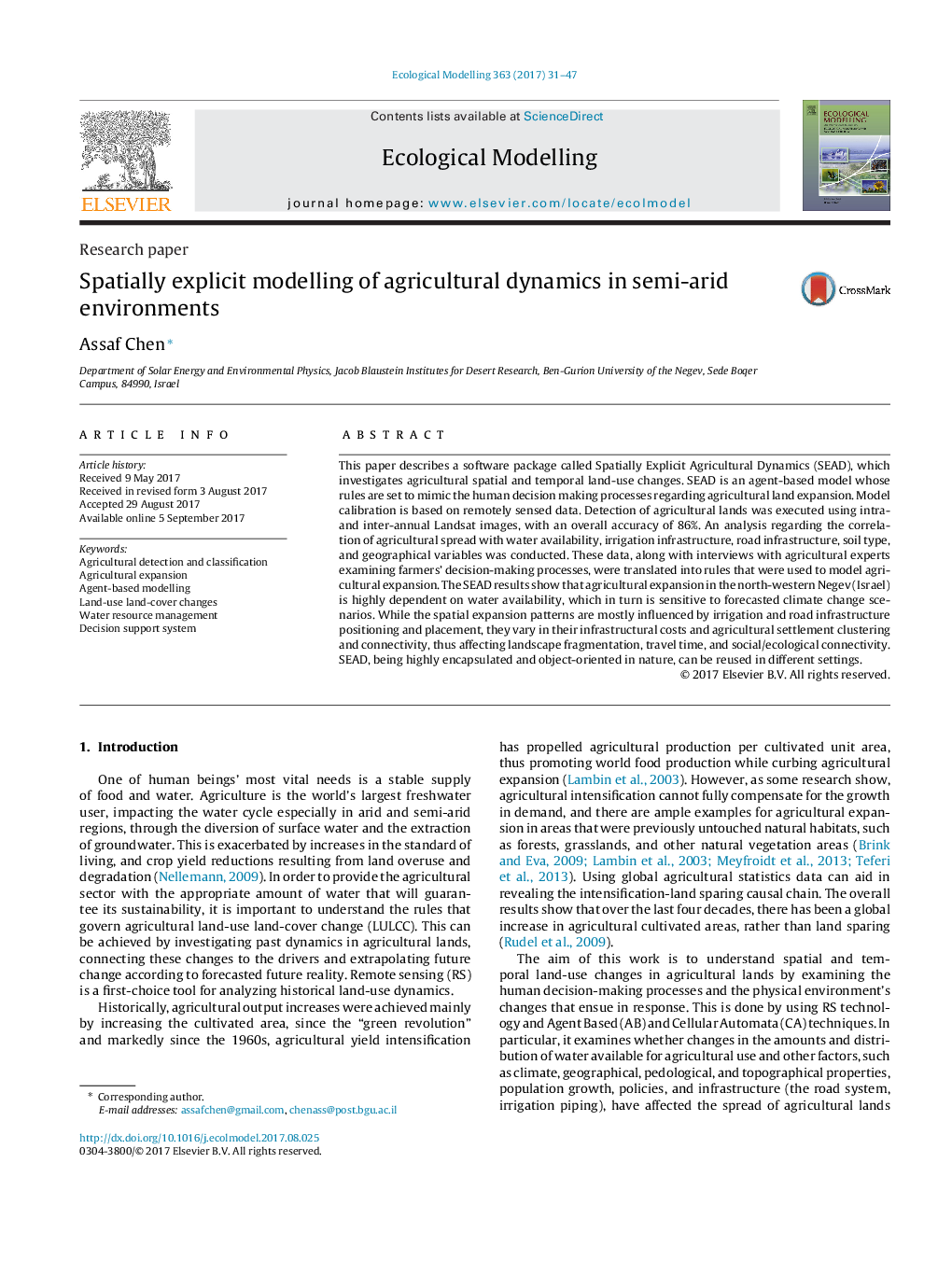| کد مقاله | کد نشریه | سال انتشار | مقاله انگلیسی | نسخه تمام متن |
|---|---|---|---|---|
| 5742011 | 1617384 | 2017 | 17 صفحه PDF | دانلود رایگان |
- A multi-scale spatially explicit model for agricultural areas' spread was developed.
- Successfully classified agricultural fields in small scale fragmented arid zones.
- Agriculture is forecasted to expand in the rural arid areas of the Negev (Israel).
- Agricultural expansion patterns rely on road/irrigation infrastructure placement.
- Climate change is forecasted to reduce the total amount of cultivated areas.
This paper describes a software package called Spatially Explicit Agricultural Dynamics (SEAD), which investigates agricultural spatial and temporal land-use changes. SEAD is an agent-based model whose rules are set to mimic the human decision making processes regarding agricultural land expansion. Model calibration is based on remotely sensed data. Detection of agricultural lands was executed using intra- and inter-annual Landsat images, with an overall accuracy of 86%. An analysis regarding the correlation of agricultural spread with water availability, irrigation infrastructure, road infrastructure, soil type, and geographical variables was conducted. These data, along with interviews with agricultural experts examining farmers' decision-making processes, were translated into rules that were used to model agricultural expansion. The SEAD results show that agricultural expansion in the north-western Negev (Israel) is highly dependent on water availability, which in turn is sensitive to forecasted climate change scenarios. While the spatial expansion patterns are mostly influenced by irrigation and road infrastructure positioning and placement, they vary in their infrastructural costs and agricultural settlement clustering and connectivity, thus affecting landscape fragmentation, travel time, and social/ecological connectivity. SEAD, being highly encapsulated and object-oriented in nature, can be reused in different settings.
560
Journal: Ecological Modelling - Volume 363, 10 November 2017, Pages 31-47
